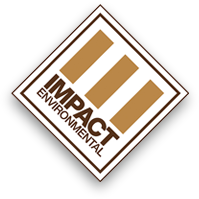Impact
News, Views, Opinions
News
Q&A on Definitions, Goals, and Tools for New Jersey’s Environmental Justice Law
August 15, 2024
Q: What is the New Jersey Environmental Justice Law, and why is it significant?
A: The New Jersey Environmental Justice Law (NJSA 13:1D-157) is significant because it requires the New Jersey Department of Environmental Protection (NJDEP) to evaluate the contributions of certain facilities to existing environmental and public health stressors in overburdened communities when reviewing permit applications and renewals. The law is designed to address the disproportionate environmental and public health impacts on these communities and ensure they have a voice in decisions that affect their environment.
Q: How does the New Jersey Environmental Justice Law define an Overburdened Community?
A: An Overburdened Community is defined by the law as any census block group where:
- At least 35% of households qualify as low-income (at or below twice the poverty threshold);
- At least 40% of residents identify as minority or as members of a State-recognized tribal community;
- At least 40% of households have limited English proficiency.
Q: What are the goals of the New Jersey Environmental Justice Law?
A: The goals of the New Jersey Environmental Justice Law are to address the historical and ongoing environmental injustices faced by overburdened communities. The law aims to:
- Ensure that all residents, regardless of income, race, ethnicity, or national origin, have the right to live in a clean and healthy environment.
- Prevent the disproportionate siting of polluting facilities in low-income and minority communities.
- Provide these communities with a meaningful opportunity to participate in decision-making processes regarding the placement and expansion of facilities that could increase environmental and public health stressors.
Q: What is EJScreen, and how does it relate to the EPA’s mission?
A: EJScreen is an environmental justice mapping and screening tool developed by the Environmental Protection Agency (EPA). It combines environmental and demographic indicators to create maps and reports, helping to identify and address environmental justice issues. The tool is based on nationally consistent data and is designed to assist the EPA in fulfilling its responsibility to protect public health and the environment, especially in communities that are disproportionately affected by environmental hazards. This tool aids in the implementation of the law by requiring projects within these areas to coordinate with the NJDEP’s Office of Permitting and Project Navigation (OPPN).
Q: How did the 1994 Executive Order influence the analysis of federal actions under NEPA?
A: The Presidential Memorandum accompanying the 1994 Executive Order required federal agencies to analyze the environmental effects of their actions, including human health, economic, and social impacts, with a particular focus on minority and low-income communities. This directive became an integral part of the National Environmental Policy Act of 1969 (NEPA) analyses, ensuring that the environmental justice impacts of federal actions were carefully considered.
Q: Where can more information be found about the New Jersey Environmental Justice Law?
A: More information, including updates and opportunities to participate in the stakeholder process, can be found on the NJDEP Environmental Justice Policy page at NJDEP Environmental Justice Policy.

